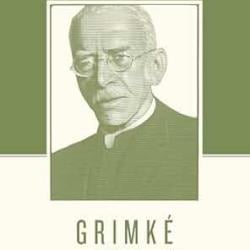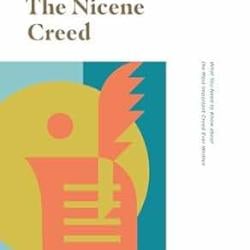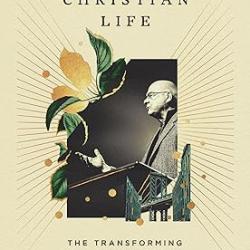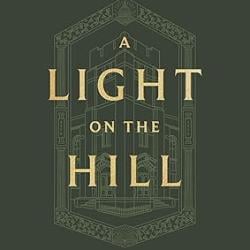Review of Love in the Ruins by Walker Percy
By COYLE NEAL
In Walker Percy’s Love in the Ruins, society has begun to slide towards the logical conclusions of the 1960s. In the moral wasteland that America has become, Dr. Thomas More has invented “More’s Qualitative Quantitative Ontological Lapsometer”—a machine that measures and corrects the problems of the soul. (More’s name is not a coincidence—we are repeatedly told that he is a descendent of the murderous Catholic martyr.) Will More get his machine into the right hands in time to save the human race?
I confess that I haven’t decided what I think about this novel. On the one hand, I love books and movies that involve (or, in this case, are written by) a crotchety old man who tells it like it is. I confess some (probably sinful) delight especially in the speaking of what is true-but-socially-unspeakable. So fair warning: if you are the sort of delicate flower who is easily offended by what other people say, then this book probably isn’t for you. As what may be the tamest example from the book:
Students are, if truth be known, a bad lot. En masse they’re as fickle as a mob, manipulable by any professor who’ll stoop to it. They have, moreover, an infinite capacity for repeating dull truths and old lies with all the insistence of self-discovery. Nothing is drearier than the ideology of students, left or right… People talk a lot about how great “the kids” are, compared to kids in the past. The only difference in my opinion is that kids now don’t have sense enough to know what they don’t know. On the other hand, my generation is an even bigger pain. (207)
Like I said, I found much to delight in throughout the book. On the other hand… the plot is a bit slow. As in, the bulk of this 379-page book takes place across the course of four days (July 1-4). And it’s not like he’s fighting zombies the whole time (or even rednecks, for that matter). Most of it is the hero wandering around thinking about stuff. Which, as I’ve pointed out in other reviews, is not my cup of tea.
As I understand it (though I am no Percy scholar), the main ways to engage Percy’s books are through the filter of his existentialism, his Catholicism, or a combination of both. Since I’ve tackled existentialism in another review and I don’t think this is really the best place to engage Catholicism, I’m going to just give a few random thoughts I had while reading the book:
First, Percy’s criticisms of the various perspectives of society popular at the time are usually right on. He engages radical racial movements, the New Left, the New Right, and various other ideologies that are maybe less well known today, highlighting the weaknesses and inconsistencies in their beliefs and mocking them without mercy. Examples of each could be given, but maybe my favorite was one of his send-ups of the New Left:
Professor Coffin Cabot, a famous scholar on loan from Harvard, is in [the rioting students’] midst, a pair of wire-cutters in one hand and the flag of North Ecuador in the other, counseling, exhorting, and showing students how to clip the heads off nails after they are driven into a golf ball…
‘What are you doing?’
‘We are organizing
a nonviolent demonstration for peace and freedom in Ecuador.’
‘Nonviolent?’ I ask, looking at the pile of spiked golf balls.
‘We practice creative nonviolent violence, that is, violence in the service of nonviolence. It is a matter of intention.’ (309)
Second, while his criticisms are excellent, his solutions are (as far I can tell) either vague or insufficient. He offers as an alternative to the insanity into which the world is gradually sliding:
What does a man live for but to have a girl, use his mind, practice his trade, drink a drink, read a book, and watch the martins wing it from the Amazon and the three-fingered sassafras turn red in October? (319)
All of which goals [spoiler alert] More attains at the end, with the added bonus of a return to his Catholic faith through the intercession of his namesake, to whom he prays in his moment of need. Through all of his tribulations, More comes to the (surprisingly trite, though perhaps it was not so trite in the early 1970s) conclusion that what is important is not international acclaim, fortune, and glory, but rather a simple, small life full of faith, family, and community. Which is all well and good—we Christians can certainly agree with our Aristotelian, conservative, and Catholic friends that these are things to be enjoyed and celebrated. But what is missing from the text (and perhaps the cause of the bleakness of even the end of the book) is any idea of atonement. As believers, we of course do not hold that faith in Jesus Christ creates the good things of this life—such as family and community; we believe rather that faith illuminates these things when we are so blessed. That is, we don’t believe that salvation comes through family and community, and we don’t even believe that being saved necessarily brings you into a family or a community (though a solid church should involve something along those lines). We believe that salvation by faith brings you something better than either of these worldly goods. Something, indeed, of which family and community are mere pictures and shadows: through the atonement we are brought into the eternal City of God. Redemption is not sitting on a veranda with your wife watching the world go by—redemption instead gives these activities meaning and focus.
All of which is not to say that I thought the book was completely wrong. Heck, I may have missed his point in any case (please let me know in the comments if I have—I’m reading this because a student picked it to review for class, so I may have read it too quickly and glossed over something important). There is much wisdom and enjoyment to be had here, despite the occasionally slow pace and random tangents across obscure bits of mid-20th century trivia. So I do recommend this book to those interested in reflection on the problems of modern culture through the filter of a darkly cynical sense of humor.
One other thing you’ll need to know—that indeed may be critical to understanding this book and which I made the mistake of not looking up until I had finished it:
Gin Fizz:
3 parts gin
2 parts lemon juice
5 parts soda water
(7 parts lemon-lime soda may be substituted)
1 part gomme syrup
1 whole egg (optional)
Mix together and serve on the rocks.
Dr. Coyle Neal spends his days in Washington, DC not drinking gin fizzes, since he’s a Baptist and that might lead to dancing…












